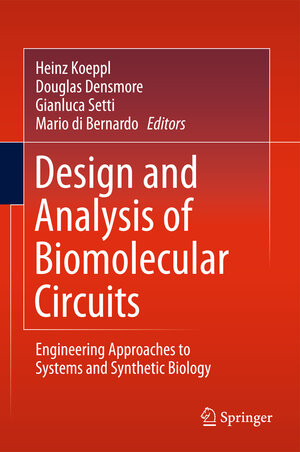
×
![Buchcover ISBN 9781441967657]()
From the reviews:
“This collection of papers is an excellent reference for anyone who would like to learn more about the engineering and computing side of systems and synthetic biology. … this clear and detailed volume will help to introduce mathematicians, engineers, and computer scientists to an application of their fields in biology. It will also serve biologists who want to know more about how in silico technologies can be an important part of the arsenal used to understand and create biological systems.” (Sara Kalvala, ACM Computing Reviews, June, 2012)
Design and Analysis of Biomolecular Circuits
Engineering Approaches to Systems and Synthetic Biology
herausgegeben von Heinz Koeppl, Douglas Densmore, Gianluca Setti und Mario di BernardoThe book deals with engineering aspects of the two emerging and intertwined fields of synthetic and systems biology. Both fields hold promise to revolutionize the way molecular biology research is done, the way today’s drug discovery works and the way bio-engineering is done. Both fields stress the importance of building and characterizing small bio-molecular networks in order to synthesize incrementally and understand large complex networks inside living cells. Reminiscent of computer-aided design (CAD) of electronic circuits, abstraction is believed to be the key concept to achieve this goal. It allows hiding the overwhelming complexity of cellular processes by encapsulating network parts into abstract modules. This book provides a unique perspective on how concepts and methods from CAD of electronic circuits can be leveraged to overcome complexity barrier perceived in synthetic and systems biology.




